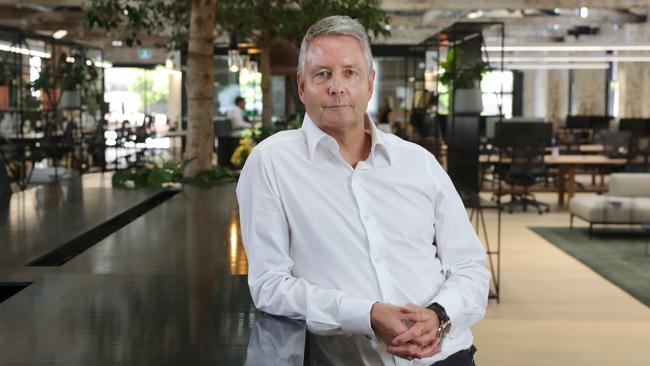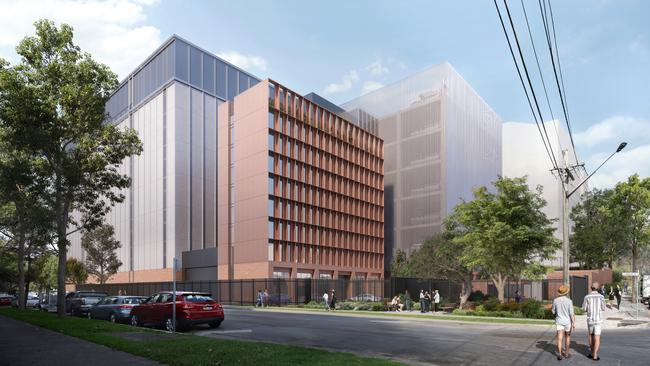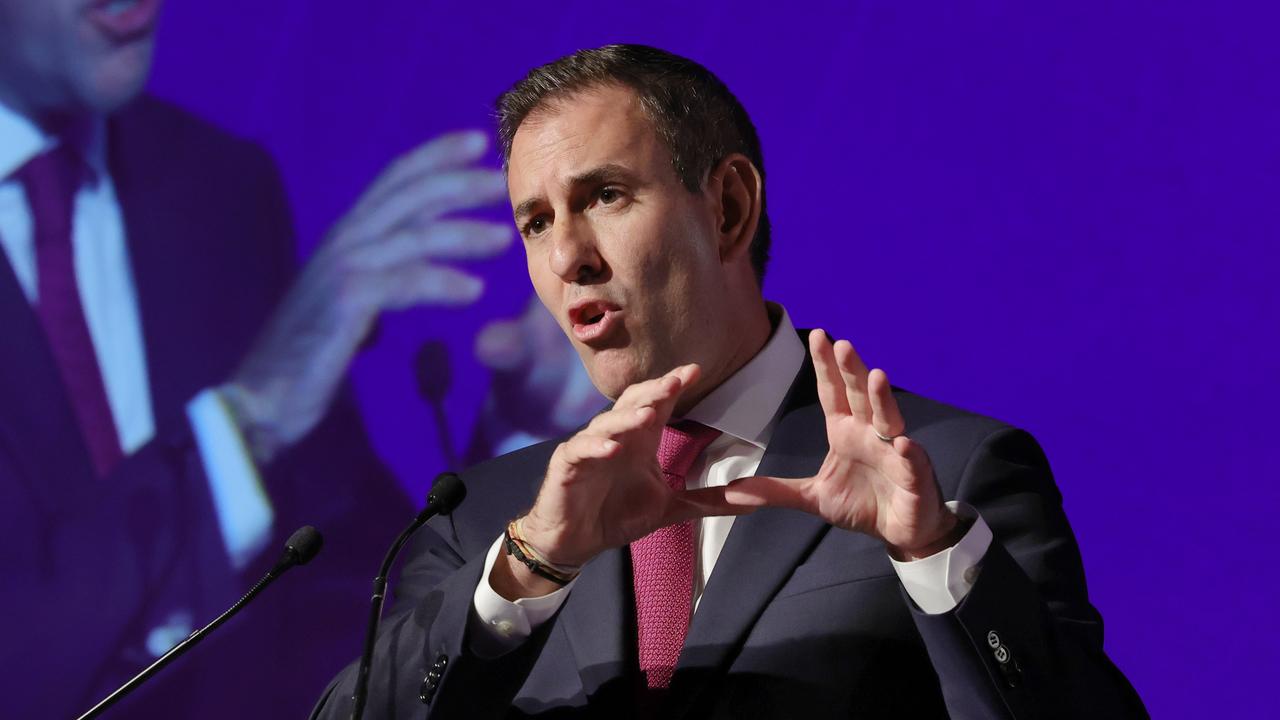Why Greg Goodman’s data centre pivot marks a turning point
The veteran property investor is replaying the strategy that turned a small commercial property trust into a $70bn industrial powerhouse.

Veteran property investor Greg Goodman is replaying the strategy that turned his small commercial property trust into a $70bn industrial powerhouse.
This time around, Goodman is pivoting the company that shares his name from smart warehouses to capitalise on the artificial intelligence-led boom in data centres.
While deep-pocketed super funds financed his growth for the past decade and a half, this time he’s inviting equity investors to share in a greater slice of the prize.
In little over an hour, Goodman had used his near record high share price to raise $4bn from existing investors through a pro-rata placement. This is almost the entire market value of Lendlease, and affected property operators as investors liquidated their holdings to boost their exposure to Goodman.

The property boss has a formidable reputation for being way ahead of the curve on smart warehouses. He created an industry where others followed by forging a low-cost investment platform and tapping pension funds to build his super-sized warehouses here and around the world. He then charged them a fee to manage them.
In making this pivot he is by no means the first mover in data centres, but he’s certainly not late to the party. However, the arrival of the ever-cautious Goodman means digitisation is serious and set to last for decades.
Goodman already has the runs on the board by building out a 5GW equivalent portfolio of data centres across 13 sites around the world. He has another $10bn worth of properties currently under construction.
To put that in context, Sydney-based AirTrunk, which was sold by Macquarie to Blackstone late last year for an eye-watering $24bn valuation, has just 1.3GW of data centres in operation – although the Asia-focused super-scaler has plenty of growth plans ahead.
Just this week Canberra-based CDC Data Centres, with less than 1GW in operation and under construction, sold a stake to the Future Fund, giving it a $17bn valuation.
Of Goodman’s current $13bn development pipeline, 46 per cent of the growth is coming from data centres and that number is growing at a faster rate than demand for his smart warehouses. This time last year, data centre demand represented 37 per cent of the growth pipeline.
Demand for data centres has created a “step-change” in growth for his business, Goodman says.
“We’re going through our next evolution of opportunity,” he tells The Australian.
Adding to his conviction, Goodman has the edge over newcomers given he is sitting on vast holdings of land, and already has power in place to fuel the energy-intensive centres. Goodman has experience in delivering major infrastructure projects for big tech clients such as Amazon. Importantly, he now has the capital to do more.
Around half of the monster raising will be used to pay down debt, after gearing drifted up to a still low 17 per cent following a buyout of some US partners on an externally managed trust. New investors are expected to move back in.
Fortifying the balance sheet now, even without specific projects or clients locked in, was the right call, Goodman says. “When you’re dealing with some of the biggest companies in the world as your customers, you want to make sure that you’ve got a resoundingly strong financial position. These are big projects.”
Big data, big spend
Goodman is now muscling in on a space where the likes of Blackstone, Brookfield and KKR have been spending up big.
KKR recently tipped annual global spending on data centres could run to $US250bn. Already that figure is looking out of date, with global tech giants and others all locked in a spending arms race.
Indeed, the arrival of China’s low-cost AI model DeepSeek hasn’t dampened momentum. Facebook owner Meta outlined plans to spend $100bn this year alone, including building a data centre “so large it would cover a significant part of Manhattan”.
A recent analysis by McKinsey & Co forecast global demand for new data centre capacity could rise between 19 and 22 per cent each year until the end of this decade. That was their base case outlook, with a more bullish case seeing annualised growth at 27 per cent. Some 70 per cent of the demand is down to hosting AI-linked computing power.
Even if this building activity is delivered, there will still be a data centre supply deficit of 15GW in the US by 2030, McKinsey says.
Goodman isn’t turning his back on the $84bn smart warehouse portfolio that has served the company so well. Instead, he sees this complementing the AI boom.
He won’t be drawn on the shape of Goodman in a decade’s time, but the focus of the company will be on digital growth and digital infrastructure. Warehouses themselves will become smarter with robotics and analytics, which will need more computing power. The way Greg Goodman sees it, it’s a perfect digital combination.
Gupta collapse
Sanjeev Gupta’s global empire has been crumbling slowly since the collapse of his ambitious Australian financier Greensill four years ago.
It was only the post-Covid boom, with massively inflated steel prices, that allowed Whyalla to keep Gupta’s global operations going for so long.
The ageing Whyalla steelworks have long been starved of investment, and have been mined for cash over the past few years – propping up all parts of Gupta’s debt-laden and very opaque manufacturing and coal mining empire.
It is a high-risk push by the South Australian government to force its collapse, and for Gupta it could be the final blow for a business built on smoke and debt.
Greensill’s cashflow financing model gave Gupta the confidence to go out and borrow to pay over the odds for second-tier assets around the world.
The two had a symbiotic relationship. Gupta’s GFG Alliance relied on Greensill to stay alive, while Greensill needed GFG to flatter its balance sheet in the lea- up to a $US7bn stockmarket listing that never eventuated.
At the time of Greensill’s collapse, it was estimated to have a $US5bn exposure to the GFG Alliance. Ever since, Gupta has been surviving hand to mouth, keeping his operations here and in Britain alive.
Beyond Whyalla, there’s also the Infrabuild steel recycling and distribution business in Australian that is on the financial edge. Its debt has been trading at 80c in the dollar, suggesting a one in five chance of default.
While Gupta has been careful to financially ring-fence the different parts of his empire, the collapse of Whyalla will raise major concerns that Infrabuild will be the next big domino to fall. Even with the financial stench, it’s an almighty bet by the South Australian government to be the one to go around the banks and pull the pin on the state’s Whyalla steelworks. It’s extremely rare for a state government, which sits well down the pecking order of creditors, to push a company under.
South Australia is a creditor to GFG Alliance, and clearly Premier Peter Malinauskas has become sick of Gupta’s failure to pay millions in mining royalties and water bills.
He, like many others, has stopped listening to Gupta’s promises to pay. The most recent was the windfall of funds from the opaque sale of Gupta’s stake in NSW’s Tahmoor coal mine.
Mr Malinauskas believes going down this path and appointing KordaMetha will give his state control of the process.
It does just the opposite.
The Premier becomes another creditor to Whyalla behind a long list of others including very likely the Australian Taxation Office and senior bondholders that have preference. Ultimately it will be these banks and bondholders, not Mr Malinauskas, calling the shots.
Donald Trump’s decision to slap tariffs on steel imports might be good for domestic US producers – including BlueScope with operations there – but it is very bad news for the rest of the world.
China produces around 110 million tonnes of steel annually and if its slowing economy can’t absorb that, it soon makes its way to Australia – at a deep discount.
Unlike BlueScope, Whyalla is a long steel manufacturer – used in construction and building – and it is almost entirely domestic focused.
And unlike BlueScope, Whyalla is a high-cost producer with no room to value add, meaning it is entirely at the whim of the local market. This will make it even harder to find a prospective buyer – and it won’t be BlueScope.
To highlight the pressure, Gupta’s Whyalla and Infrabuild operations have been leading applications to the federal government’s Anti-Dumping Commission in the past year.
The vulture funds that have been playing with the GFG bonds have less patience about the revival of Whyalla.
Like the collapse of Rex, Mr Malinauskas could find he has to commit much more of his taxpayer funds to ultimately buy out Whyalla. It was a mess to begin with, and a mess to end with.
eric.johnston@news.com.au





To join the conversation, please log in. Don't have an account? Register
Join the conversation, you are commenting as Logout